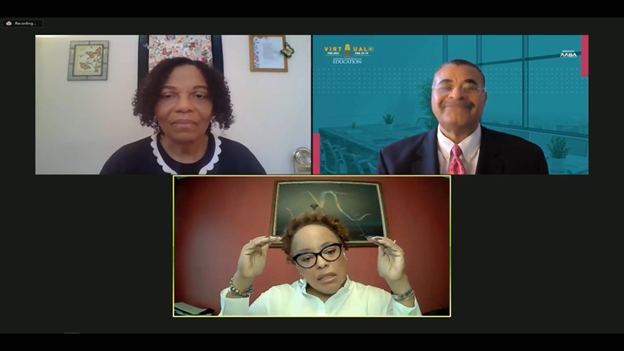By Kaitlyn Francis |
Telehealth has been part of 20 percent of school-based health centers even before the COVID-19 pandemic. Nowadays, it has become a major tool for educators with more than half of all schools providing case management and referrals for basic health needs since the closure of many school buildings last spring.
That point was at the center of a presentation moderated by Kayla Jackson, project director in the Children’s Programs Department at AASA. She led a panel that discussed the expanded use of telemedicine to improve the health of students and staff. The panelists were Robert Boyd, president and CEO of the School Based Health Alliance, and Donna Mazyck, executive director of the National Association of School Nurses.
Moving forward, Boyd said, he has concerns over a pending mental health crisis among young people who have been traumatized as a result of their isolation since the onset of COVID-19. With less vaccinations being administered for other diseases this year, he is also worried about a cluster of outbreaks of diseases such as measles and a shortage of healthcare professionals in schools.
Boyd suggested telehealth as a tool to help.
Until recently, health care providers were skeptical about telemedicine services because they were not comfortable with the technology, said Boyd. Children live on technology so health care providers need to get up to speed to expand their reach. He said the alliance that he leads is creating a school-based telehealth playbook to help clinicians effectively use telemedicine for oral, primary and mental health care.
Boyd recommends school health centers not attempt to do telehealth on their own. Find a healthcare partner to help administer telehealth, find a strong partner that can get reimbursements for startup funds and fund a telehealth program manager that the school nurse can supervise, said Boyd.
“It’s been an effective tool,” he said. “It is not a replacement for a school nurse or counselor.”
His alliance is working to secure a grant to help with the shortages in the school nurse and diversification within that workforce. Qualified licensed healthcare professionals are needed to serve those roles and telehealth can play a role. Boyd said the shortage of school nurses is linked to better pay for health care professionals in private sectors.
Mazyck, an official with the national organization representing school nurses, said school-based health professionals help students self-manage chronic diseases, improve student attendance, control and prevent infectious disease, provide a safe environment and create a sense of connectedness.
For students to be connected with school, they need one kind adult to care about them – and that individual could be the school nurse, she said.
Across the United States, 25 percent of schools do not have school nurses, Mazyck told the school leaders. During the pandemic, school nurses reached out to students at risk, assisted with meal delivery, served as a health resource expert for parents, conducted support groups and regular office hours for consultations, managed students’ chronic health conditions and educated staff and students on COVID-19, she said.
Better health leads to better learning, and telehealth allows for students to get the health care they need in a timely way, she noted.
(Kaitlyn Francis is a senior in the Philip Merrill College of Journalism at University of Maryland, College Park, and an intern with AASA’s Conference Daily Online.)
